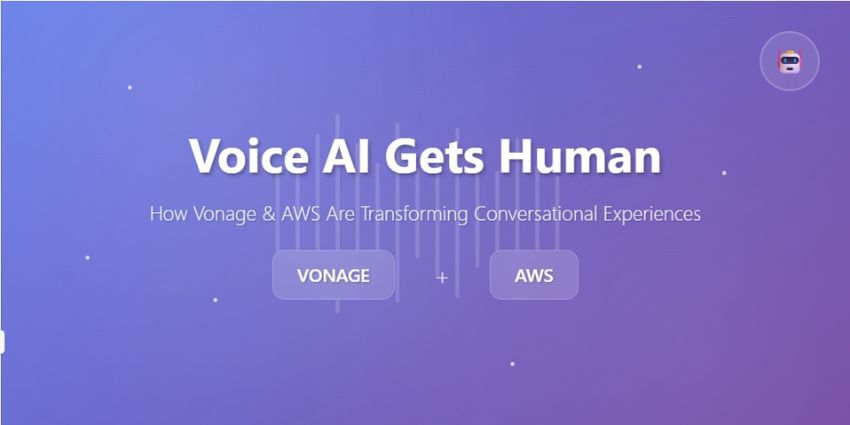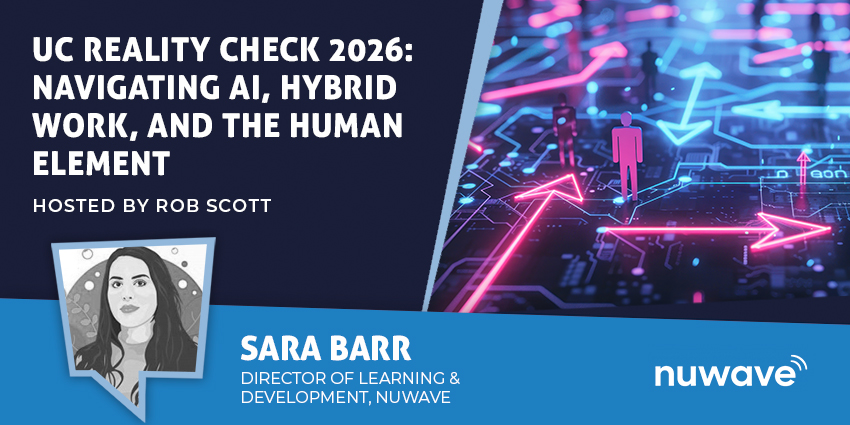The days of robotic, stilted voicebots might finally be numbered.
Vonage and AWS have unveiled a new collaboration that blends Vonage’s developer-friendly Voice API with Amazon Nova Sonic, a cutting-edge speech-to-speech AI model. Together, they promise to bring natural, real-time voice interactions to customer service, outbound engagement, and more, aspiring to deliver no awkward pauses and no flat delivery.
But beyond the headline tech, this move has bigger implications for enterprise IT and transformation leaders rethinking their voice strategies.
A Smarter, Smoother Voice Experience
At the heart of the announcement is a technical integration: Vonage’s Voice API now works seamlessly with Amazon Nova Sonic, AWS’s latest foundation model built specifically for expressive, lifelike voice AI.
However, this isn’t just a shiny new toy. It’s designed to solve a very real problem. Most AI voice systems today still feel clunky. They’re slow to respond, often misjudge tone, and lack the ability to hold anything close to a natural-sounding conversation.
Nova Sonic seeks to change that. It adapts tone, rhythm, and emotional nuance on the fly. Paired with Vonage’s global voice infrastructure, the tech can now power responsive voice agents across traditional phone calls, in-app chat, or web browsers, with none of the usual latency or buffering issues that break the illusion of a real-time conversation.
This is about making voice AI fundamentally work. The integration makes it far easier for developers to build intelligent voice agents without wrestling with complex backend pipelines or telephony quirks. Whether a small business automates bookings or a large enterprise manages customer logistics, the barrier to entry for smart voice interactions has just dropped significantly.
And the use cases go far beyond basic call deflection. Consider context-aware outbound calls, multilingual agents that switch languages on the fly, or IVR systems that talk like people rather than menu trees. In brief, it’s voice AI that’s finally starting to feel human.
Why IT Leaders Should Pay Attention
For CIOs, heads of customer experience, and enterprise architects, this is a chance to rethink how voice fits into the customer journey.
Voice still plays a central role in business communications, but modernising it has often felt like a painful trade-off between high cost, technical complexity, and questionable customer benefit. Vonage and AWS have made the equation a lot more appealing.
By packaging a speech model as sophisticated as Nova Sonic into a platform as accessible as Vonage’s Voice API, they’re offering a way to upgrade voice infrastructure without starting from scratch or signing up for a multi-year rip-and-replace project. That makes this a serious contender for transformation roadmaps, especially in industries where voice still matters most: finance, healthcare, logistics, and travel.
It also gives IT teams more room to experiment. Want to roll out a multilingual voice assistant across Europe? Or automate 80 percent of inbound appointment calls? The tools are now in place to prototype quickly, scale confidently, and measure real impact.
Perhaps most importantly, it starts to shift AI voice from being a bolt-on experiment to something that can live at the heart of the customer experience strategy; less gimmick, more infrastructure.
The takeaway is that if your organisation is still stuck with creaky IVR systems or siloed AI pilots, this integration offers a way out and a way forward. The level of partnership showcases innovation and clears the path to make it real. This might be the moment for IT leaders who’ve been waiting for voice AI to grow up.
Vonage, AWS Partner on Comms APIs to Foster Innovation
This latest integration is part of a broader and growing collaboration between Vonage and AWS. The two companies have already worked closely on communications and networking APIs to push the boundaries of innovation in cloud-based customer engagement.
With Vonage operating as a subsidiary of Ericsson, the partnership is widening in scope. It’s about combining Vonage’s developer-friendly platform with Ericsson’s 5G network strengths and the full breadth of AWS’s cloud and AI services. Together, they’re laying the groundwork for next-gen apps that span everything from real-time voice to edge-connected smart devices.
One key focus is accessibility. By making these advanced capabilities available through the AWS Marketplace, the companies aim to put intelligent voice and network services directly into the hands of millions of developers. This ambitious strategy aims to bring enterprise-grade, AI-powered communications within the reach of any organisation ready to modernise quickly.







